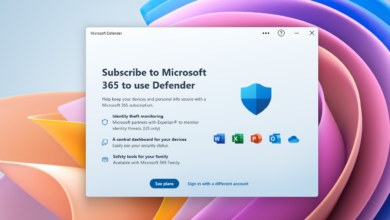Meet Ladybird browser, a promising cross-platform web browser

There is a new browser on the rise that promises to change the way we use the internet completely. Ladybird Browser is an ambitious project that is making steady progress. It uses the LibWeb and LibJS engines found in SerenityOS. Ladybird is still in development, but it has already reached significant milestones that have piqued the interest of both techies and early adopters.
Ladybird will provide a consistent web experience across devices, satisfying the varying demands of today’s internet consumers. This exciting newcomer has the ability to radically alter our experience of using the internet due to its cutting-edge capabilities and solid engine base.
In this blog post, we’ll delve into the world of Ladybird Browser, exploring its core functionalities, its reliance on SerenityOS LibWeb and LibJS engines, and the significant progress it has made so far
What is the new Ladybird browser?
Ladybird is a new multi-platform browser that utilizes the SerenityOS LibWeb and LibJS engines. It is still under development, but it has already made significant progress. Here’s a rough breakdown of the current stack:
Ladybird: Tabbed browser GUI application
LibWeb: Web engine, multiple standards: HTML, DOM, CSS, SVG, …
LibJS: The ECMAScript language, runtime library, garbage collector
LibGfx: 2D graphics, text rendering, image formats (PNG, JPG, GIF, …)
LibRegex: Regular expression engine
LibXML: XML parser
LibWasm: WebAssembly parser and interpreter
LibUnicode: Unicode support library
LibTextCodec: Text encoding conversion library
LibMarkdown: Markdown parser
LibCore: Miscellaneous support functions (I/O, datetime, MIME data, …)
Qt: Cross-platform GUI and networking
Ladybird is a fast and efficient browser that doesn’t hold you down. The proprietary rendering engine it employs is quite efficient. Like other popular browsers, Ladybird supports the most important web standards. This means you may use it to navigate the web with ease.
You can see that the Ladybird browser is fully compliant with the Acid3 standards test, which includes validation of several DOM/HTML APIs and a battery of tests covering the fundamentals of CSS layout. However, many modern web technologies (such as CSS flexbox, CSS grid, etc.) are not included in the test.
Ladybird’s dedication to safety is one of its distinguishing features. The many safety mechanisms included in Ladybird are there to ensure your online privacy and safety. Ladybird, for instance, has an inbuilt ad blocker and is set to block third-party cookies automatically, like Opera.
Ladybird stands apart from the crowd in part because of its emphasis on personalization. Ladybird’s skinnable interface lets you personalize the browser to reflect your tastes. The browser’s appearance, typeface, and structure are all customizable. You can also add your own extensions to customize the way Ladybird works.
If you are looking for a lightweight, efficient, and secure browser, then Ladybird is a great option to try if you are open to new options
Here are some of the features of Ladybird:
Lightweight and efficient
Supports a wide range of web standards
Focus on security
Customizable
Here are some of the things that Ladybird is still working on:
Support for more extensions
Better performance on mobile devices
More localization
Compatibility issues
The accuracy of current websites is becoming better, but Ladybird still has a lot of problems with style and compatibility as you can see above.
To get more information and try it, simply click here.
Thank you for being a Ghacks reader. The post Meet Ladybird browser, a promising cross-platform web browser appeared first on gHacks Technology News.
gHacks Technology News
